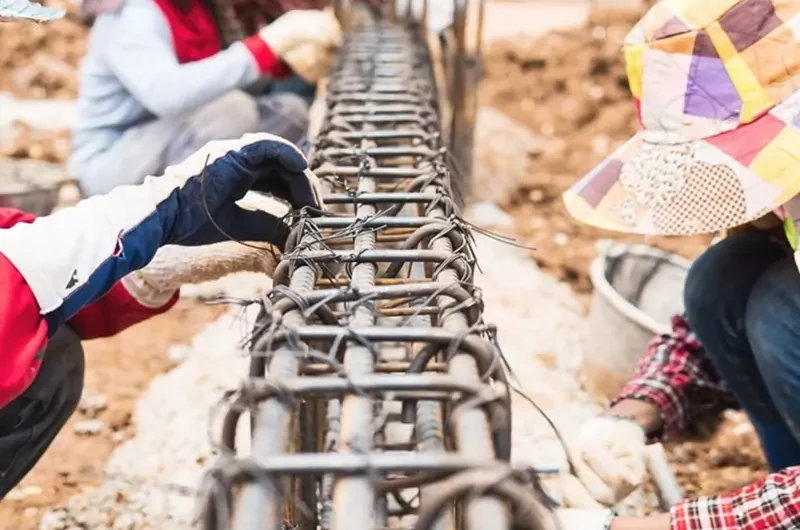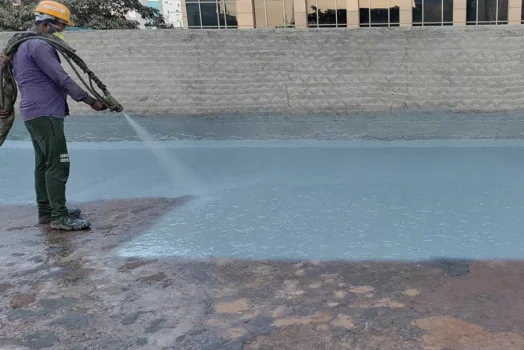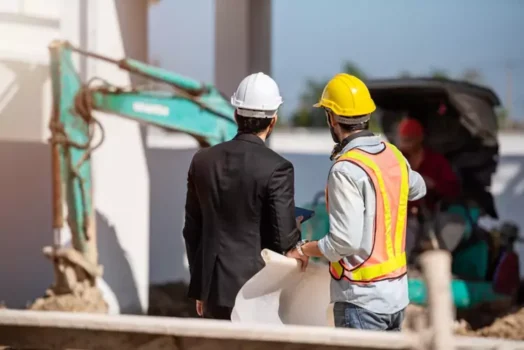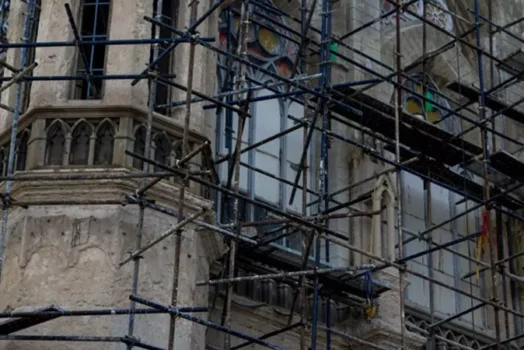Table of Contents
- Introduction
- What is Column Jacketing?
- When does Column Jacketing become necessary?
- The Role of Gubbi Civil Engineers
- Step-by-Step Column Jacketing Process
- Frequently Asked Questions (FAQs)
Introduction
In the dynamic world of civil engineering and construction, maintaining the safety of existing structures is a prime concern. Buildings and infrastructures age over time, and their original design capacities may become weak to meet the demands of modern standards, safety regulations, and functional requirements. This is where Column Jacketing, a specialized service provided by Gubbi Civil Engineers, India’s leading structural repair contractor, comes into play. In this article, we will explore the essential aspects of Column Jacketing, why it becomes necessary, when column jacketing is required, and how we help you excel in providing the best Column Jacketing services in Mumbai and all over India.
What is Column Jacketing?
“Jacketing” in construction and structural engineering refers to the process of adding an additional layer or covering to an existing structural element. It is done to improve the performance, durability, and strength of the infrastructure. This technique is used to reinforce and protect various structural components, and one specific application of jacketing is “Column Jacketing.”
Column Jacketing is a specialized form of jacketing that focuses on enhancing the strength and load-bearing capacity of existing structural columns within buildings or other structures. Columns are the essential elements for heavy load bearing that provide vertical support to the structures. Over time, these columns may get weak and damaged due to factors such as aging, environmental conditions, increased load requirements, or seismic considerations.
When does Column Jacketing become necessary?
Column jacketing becomes necessary in a variety of situations where the structural safety of existing columns within a building or structure is compromised or needs to be improved. Here are the common reasons column jacketing becomes necessary:
- Structural Deterioration:
Over time, columns become damaged due to factors like aging, moisture, exposure to environmental conditions, and lack of maintenance. Signs of deterioration include cracks, spalling, or a loss of load-carrying capacity. Column jacketing is necessary to regain the column’s structural strength and safety in such cases.
- Increased Load Requirements:
Renovations, changes in building usage, or the installation of heavier equipment can lead to an increased demand and load on existing columns. Column jacketing is used to reinforce the columns, to ensure they can safely support the additional loads.
- Seismic Retrofitting:
In regions prone to earthquakes, column jacketing is crucial to enhance a building’s ability to withstand seismic forces. Retrofitting existing columns with materials like fiber-reinforced polymer (FRP) jackets can significantly improve their seismic performance.
- Corrosion Protection:
Columns in coastal or industrial areas get exposed to corrosive elements, such as saltwater or chemicals. Column jacketing provides a protective layer that shields the columns from corrosion, thus extending their lifespan.
- Fire Protection:
In structures where fire safety is a major concern, column jacketing includes materials with fire-resistant properties. This ensures that the columns maintain their structural integrity during a fire. Thus leading to the overall safety of the building.
- Aesthetic Enhancement:
Sometimes, column jacketing is employed for aesthetic reasons. It can improve the appearance of columns or align them with a new architectural design. The jacketing materials can be selected to match the desired aesthetic.
- Compliance with Building Codes:
When changing the building codes and safety standards, the process of retrofitting of existing columns becomes essential to ensure they meet current regulations. Column jacketing helps the structures to maintain safety and integrity.
- Preventive Maintenance:
In most cases, column jacketing is used as a preventive measure to reinforce columns that are showing early signs of wear and tear. This proactive approach prevents more significant problems in the future.
- Enhancing Structural Support:
Owners of critical and valuable infrastructures opt for column jacketing to enhance structural support. It ensures the structure can withstand sudden events and remain operational. - Restoration of Historic Structures:
When preserving the safety of historic buildings, column jacketing is used to maintain the appearance and structural stability of the original columns.
The Role of Gubbi Civil Engineers
Gubbi Civil Engineers is the leading name in this industry in India, renowned for its expertise in structural repairs and, in particular, Column Jacketing services. Here’s why you should consider Gubbi Civil Engineers for your Column Jacketing needs:
- Experience and Expertise:
With more than 30 years of experience and a team of highly qualified engineers and technicians, Gubbi Civil Engineers possesses the expertise to handle complex Column Jacketing projects with precision and excellence. We are the leading contractors and service providers for various types of structural repairs and column jacketing services since 1993.
- Innovative Solutions:
We stay up-to-date with the latest advancements in materials and techniques in column jacketing to ensure quality and safety which is our prime motive.
- Customization:
Every structure is unique, and we provide Column Jacketing solutions to meet your specific needs. Our engineers conduct a thorough inspection and estimation to determine the most suitable materials and methods for your project. - Compliance and Safety:
We ensure that all Column Jacketing projects meet and exceed local building codes and safety standards. And to guarantee the safety and longevity of your structure.
Step-by-Step Column Jacketing Process
The Column Jacketing process involves several steps to ensure the successful reinforcement and enhancement of existing structural columns. Here’s a step-by-step overview of the Column Jacketing process:
- Initial Assessment:
The process begins with a thorough assessment and inspection of the existing columns that need jacketing. This helps to determine the condition of the columns, the specific requirements of the project, and the materials and methods that will be most suitable for jacketing of the columns. - Material Selection:
Based on the assessment, engineers and experts from Gubbi Civil Engineers will select the appropriate jacketing materials for the columns. The selection is based on factors such as structural requirements, environmental conditions, load-bearing capacity, and any aesthetic considerations. - Surface Preparation:
Preparing the surface of the existing column is a crucial step to ensure a strong bond between the column and the jacketing material. This step involves cleaning the column’s surface to remove any loose material, dirt, or contaminants. Additionally, any damaged or deteriorated portions of the column need to be repaired. - Application of Jacketing Material:
The chosen jacketing material is applied to the column using specialized techniques. Depending on the project’s requirements, this material can be applied in various forms, such as wraps, coatings, or castings. The jacketing material is applied uniformly and securely to the column’s surface to provide the required support. - Curing and Quality Control:
After the jacketing material is applied, it needs time to cure and harden. The curing process is essential to ensure the jacketing material achieves its optimal strength. Quality control checks are conducted during and after the curing process to verify that the work meets the required standards. These checks involve structural tests, inspections, and compliance with project specifications. - Finishing and Aesthetics:
If aesthetics are a requirement for the project, finishing touches are added to ensure that the jacketed columns blend smoothly with the overall architectural design. This step involves adding textures, colors, or surface treatments to achieve the desired aesthetic results. It becomes essential to balance the structural and aesthetic aspects to meet both functional and design objectives. - Documentation and Compliance:
Gubbi Civil Engineers ensures that all necessary documentation is completed for the project. This includes compliance with local building codes and safety regulations, which is critical for ensuring the safety and integrity of the structure. Documentation also helps maintain a clear record of the work performed. - Post-Project Evaluation:
Once the jacketing is complete and the columns have undergone quality control, a post-project evaluation is typically conducted. This evaluation is essential for the overall effectiveness of the jacketing process and this confirms that the columns meet or exceed the desired structural standards.
Throughout the Column Jacketing process, Gubbi Civil Engineers adheres to the highest quality standards and best practices to ensure the safety, longevity, and performance of the columns. Our expertise in this specialized field of construction and structural engineering allows us to efficiently and effectively find solutions as per the unique needs of each project.
Frequently Asked Questions (FAQs)
Q1. What is Column Jacketing, and when is it necessary?
A1. Column Jacketing is a process of adding an additional layer of material to existing structural columns to enhance their strength, durability, and performance. It is necessary when columns have deteriorated, need seismic retrofitting, require corrosion protection, or for aesthetic reasons.
Q2. Why should I choose Gubbi Civil Engineers for Column Jacketing?
A2. Gubbi Civil Engineers offers extensive expertise, innovative solutions, customization, compliance with safety standards, and a track record of successful projects. They prioritize customer satisfaction and provide a wide range of specialized services.
Q3. What materials are used in Column Jacketing?
A3. The choice of materials for Column Jacketing depends on the specific project requirements. Common materials include concrete, steel, fiber-reinforced polymer (FRP), and other composite materials.
Q4. How long does a typical Column Jacketing project take?
A4. The duration of a project varies depending on the size and complexity of the structure. Gubbi Civil Engineers focuses on efficient project management to minimize downtime.
Q5. Will Column Jacketing affect the aesthetics of my building?
A5. Not necessarily. We offer solutions that can be tailored to maintain or enhance the aesthetics of the columns, ensuring they blend with the architectural design.
Q6. What is the process for selecting the appropriate jacketing materials for my project?
A6. Gubbi’s experts conduct an initial assessment to determine the specific project requirements, including structural needs, environmental conditions, and aesthetic considerations. They select materials based on all the important factors necessary for the project.
Q7. What is the role of corrosion protection in Column Jacketing?
A7. Corrosion protection is crucial for columns exposed to corrosive elements like salt water or chemicals. Gubbi’s Column Jacketing not only reinforces columns but also provides long-term protection against corrosion, reducing maintenance costs.
Q8. How does Column Jacketing enhance seismic resilience?
A8. In seismic-prone regions, Column Jacketing enhances a building’s ability to withstand seismic forces. This is achieved by using specialized materials and techniques that improve the column’s ability to absorb seismic energy and resist deformation.
Q9. Can I use Column Jacketing for preventive maintenance?
A9. Yes, Column Jacketing can be used proactively to reinforce columns showing early signs of wear or stress. Thus preventing more significant issues in the future.
Q10. Are the materials used in Column Jacketing environmentally friendly?
A10. Gubbi considers the environmental impact of their projects and uses environmentally friendly and sustainable materials whenever possible.
Q11. How can I request a consultation or estimate for a Column Jacketing project with Gubbi Civil Engineers?
A11. You can contact Gubbi Civil Engineers through their website or reach out to their customer service representatives to schedule a consultation and receive a project estimate tailored to your needs.




